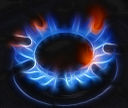[This two-part series adapts and updates information and analysis from a 2021 PRQ white paper. Part 1 considers renewable natural gas or “green gas.” Part 2 will focus on renewable hydrogen.]
Bans and “ban-the-bans”
In January, a commissioner for the U.S. Consumer Product Safety Commission (CPSC) caused quite a stir by saying that the agency was considering a ban on gas stoves. However, these comments were quickly walked back by the chair of CPSC in the face of significant industry and political backlash. That backlash also helped drive a renewed push for legislation prohibiting such bans at the local level, and at least 24 states now have such laws on the books.
Natural gas suppliers should avoid the temptation to breathe a sigh of relief, though. The 24 “ban-the-ban” states account for only a third of the combined residential and commercial consumption of natural gas in the United States. That volume is nearly equaled by the four highest consuming states alone – New York, California, Illinois, and Michigan – all of which are less friendly to natural gas. In May, New York made history as the first state to ban natural gas stoves and furnaces in new construction, and over 75 California cities and counties have implemented building codes that do the same. While no gas bans are currently in place in Illinois or Michigan (though one is reportedly being drafted for Chicago), Illinois’ just-released Climate Action Plan and Michigan’s Healthy Climate Plan both include a shift to electric heat pumps for space and water heating, with the latter identifying natural gas power plants as the second leading source of carbon emissions in the state.
Action plans and inaction pitfalls
Plans aimed at reducing greenhouse gas (GHG) emissions such as these tend to trade in general targets accompanied by strategy recommendations of varying degrees of specificity. Nevertheless, they provide important context for the clearer and more present danger to natural gas providers presented by gas stove bans. As of 2022, 31 states and the District of Columbiahave released GHG-reduction plans, almost all of which include a significant push toward electrification. Moreover, that number represents a 33% increase in only 18 months and elides updates to plans undertaken by states such as California, Michigan, and New Mexico.
Given the strength of this trend, too great of a focus on blocking gas stove bans and the like would be unwise. It is imperative that providers demonstrate that they can make positive contributions to emissions goals, thus positioning themselves as community partners rather than corporate obstructionists. In addition, green offerings have traditionally been a great way for retail suppliers to provide value-added products to consumers – a difficult task in the gas market.
Offsets at the outset
Thus far, the commonest approach along these lines has been to provide offset-based “carbon neutral” offerings. While this is a good start, some environmental activists are making arguments about offsets’ effectiveness and perverse incentives, calling into question the ecological benefits of offsets. Further, providers are likely to see diminishing political returns on such offerings as “zero-emission” electrification spreads – why pay off debts you can avoid owing in the first place?
More promising is a shift to renewable or “green” gas, which includes two resources: renewable hydrogen (RH), the topic of Part 2 of this series, and renewable natural gas (RNG).
Green gas from biomass
RNG is biomethane – methane derived from non-fossil organic material. This organic material can include energy crops but is often waste such as food waste, manure, and even used grease from restaurants grease traps. Biomethane is emitted from the organic matter as one of the byproducts of anaerobic digestion, a process in which it is decomposed by microorganisms in an oxygen-free environment. It is captured by the use of anaerobic digesters, enclosed systems containing complex microbial populations, typically at landfills, water treatment plants, and on livestock farms.
The U.S. Energy Information Administration reports that in 2021 (the most recent year for which data are finalized as of writing) the U.S. consumed 430 trillion Btu of waste biomass-sourced RNG. At a conservative estimate of 600 Btu/ft3, that accounts for approximately 2.34% of national natural gas consumption.
RNG’s potential benefits to both the environment and natural gas providers threatened by electrification were emphasized in a 2018 Navigant Consulting study prepared for California utility SoCalGas. As summarized by ERM, “The report found that 46 percent of the gas SoCalGas supplies to residential and commercial buildings, or only 16 percent of its total throughput, would need to be RNG to provide the same GHG benefits as a 100 percent electric appliance conversion scenario by 2030.” Furthermore, Navigant found RNG replacement to have lower cumulative costs than electrification across each of the three scenarios it considered.
A major reason for this cost advantage is that RNG has the benefit of being able to use existing infrastructure for delivery. However, this benefit is also the source of one of the most significant concerns about RNG. Much of that infrastructure is old, and so as much as 2.3% of the natural gas produced in United States is lost as emissions due to leaks and intentional ventingwhen devices use the highly pressurized gas to open or close valves. In addition biogas generation facilities thus far failed to improve on natural gas’ track record with respect to methane losses.
A need for speed
Although a few suppliers such as UGI Energy Services and Constellation have invested in RNG, its benefits have largely gone untapped by suppliers thus far. Unfortunately, these benefits are threatened by ambitious GHG-reduction plans. Lawmakers in several states are considering incentives for investor-owned utilities investment in RNG, and utilities have proposed dozens of RNG projects and rates in recent years (see the American Gas Association’s RNG Activity Tracker). So, it behooves retail suppliers to move quickly, enticing consumers while they have some advantage and maintaining competitiveness as that advantage wanes.


